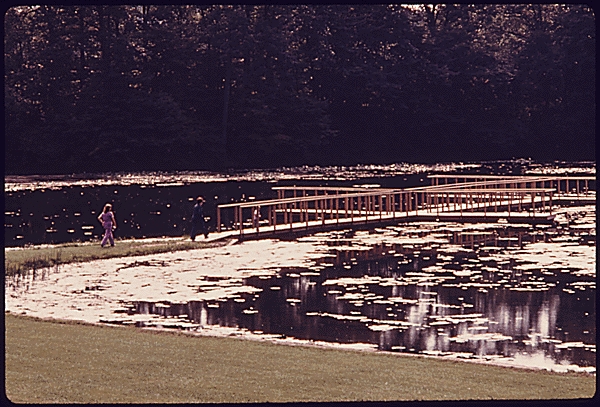Virginia Kendall Park

For thousands of years, the land that encompasses Virginia Kendall Park has been a place of nature, recreation, and history -- from its prehistoric formation to its housing of some of the area's first inhabitants. Once the site of a public works project during the Great Depression and now a modern-day urban oasis, visitors have always appreciated the variety the park has to offer.
Now a part of the greater Cuyahoga Valley National Park, this multi-purpose land unit was the first property in the area perpetually designated for park purposes. Upon his death in the late 1920s, Cleveland businessman Hayward Kendall donated 430 acres of land around the Ritchie Ledges to the Akron Metropolitan Park District, calling it Virginia Kendall to honor his mother. Long before Kendall owned the land, Native Americans lived among the rock outcroppings there, getting food and water from nearby woods and streams. A favorite place for Indians to store things back then was between the crevaces of the rocks, like that of the famed Ice Box Cave, which provided a natural form of refrigeration.
In the 1930s, the Civilian Conservation Corps (CCC) built shelters and trails as a part of the New Deal's public works programs. Young men ages 18-25, who were jobless due to the Great Depression, were recruited to cut locally quarried sandstones to build steps among the natural rock outcroppings. CCC workers also built shelters from wormy chestnut trees found in local forests. The Happy Days lodge they built there was named after the song, "Happy Days are Here Again," featured prominently in Franklin Roosevelt's 1932 Presidential campaign. The unique shape of the octagon shelter is a good example of how architects incorporated their designs into the natural landscape.
Today, the park contains four primary trails, four secondary trails, four shelters, a lake, sledding hills, open spaces, rock outcroppings, an old cemetery, and various flora and fauna. The Cuyahoga Valley National Park makes available Questing pamphlets and Self-Guided Nature guides at most trailheads, allowing visitors to more easily explore Virginia Kendall's many treasures.
Images









